Nature, a place for you and your mind.
Keep exploring. 🌞🌻🌱🌊🌎🌍🌏
_______________________________________________
#mondaymusings
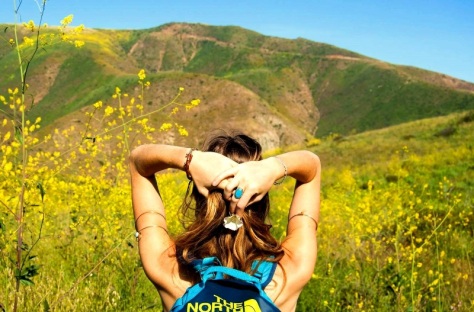
Nature, a place for you and your mind.
Keep exploring. 🌞🌻🌱🌊🌎🌍🌏
_______________________________________________
#mondaymusings

Happy Spring Equinox! 😊🌱🌸
“You can cut all the flowers but you cannot keep Spring from coming./
Podrán cortar todas las flores, pero no podrán detener la primavera.”
~Pablo Neruda.
#WorldPoetryDay #unesco
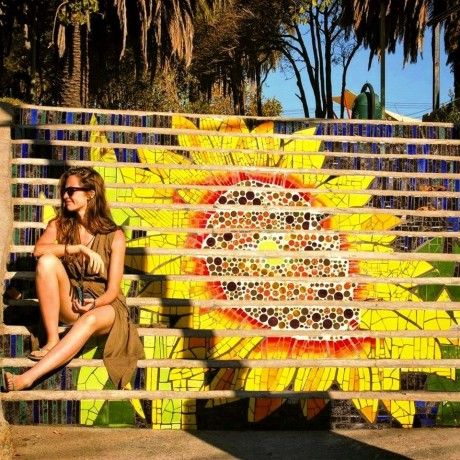
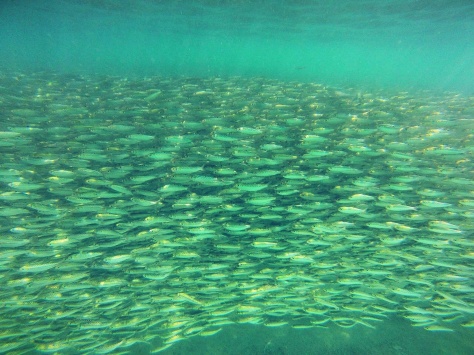
Dive deep. Discover new things. Delve into life’s wonders. 🌊🐟 #mondaymusings
_____________________________
Photo taken at Masirah Island during our Maritime Archaeological Survey of Oman (MASO).



A tranquil moment observing local everyday life along the beautiful backwaters of Kerala, India. This spot was just a short bike ride away from where I was leading a magnetometry survey at the archaeological site of Pattanam, believed to be the ancient Indo-Roman trade-port Muziris.
See our field report for more: www.keralahistory.ac.in/pdf2014/ptm2011_field%20Report.pdf
Extremely excited to have my travel article published in the current Explorer issue of F*Shift Magazine about my adventure year exploring South America and the Balkans! Check out my story for F*Shift Magazine in the digital edition (pp.40-41), order in print, or view on the website! Thanks and I hope you enjoy the snippets!

Short excerpt from the article:
I breathed in the earthy humid air as I took another step deeper into the dense tangled jungle. As I trekked through knee-high swamps any sudden sound would conjure mirages of Cayman crocodiles known to roam these waters. Ancient watchful trees whispered stories across the mist threaded forest. An orchestra of squawking parrots and howling monkeys followed me as I explored this sensory maze. I will never forget the Amazon.
A backpack, scuba kit, and boarding pass – these have been my three survival essentials of this spontaneous nomadic year. The moment I passed my Ph.D., I knew I was seeking a complete shift in lifestyle. As an underwater archaeologist with a curious spirited mind, I had a yearning for a stimulating adventure away from academia. My childhood dream had been to explore South America, submerging myself in its captivating nature and culture. Though I love the incessant, vibrant creativity and rhythms that flow through London, I needed to escape life’s rush. Coincidentally, a friend told me about a possibility to work in Chile. That was all I needed to hear – so I seized the chance, jumped on a plane and set off! I was suddenly teleported to the charismatic, colourful port-town of Valparaiso, where this year’s journey began.
(…)
Continue reading Snippets of a Nomadic Year: From South America to the Balkans
Read full article about our recent marine science expedition in Albania, featured on Physics News (Phys.org).
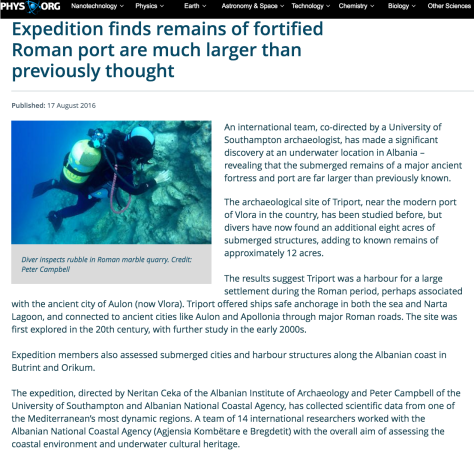
_________________________
Update (January): The latest issue of Submerged Heritage is out, with great findings from various underwater archaeology projects, and includes an article on our Albanian Marine Science Expedition! (pp.58-60). ![]() Check out the articles here: www.icua.hr/images/dokumenti/2/Bekic_ed_Submerged_Heritage_6_Web_Final.pdf
Check out the articles here: www.icua.hr/images/dokumenti/2/Bekic_ed_Submerged_Heritage_6_Web_Final.pdf
Article/ Project led by Peter B. Campbell , with a team composed of marine scientists and archaeologists working together with the Albanian Center for Marine Research, National Coastal Agency, Albanian Navy, and NGO Deep Blue Explorers. Photos by Peter, and Steven Lopez.
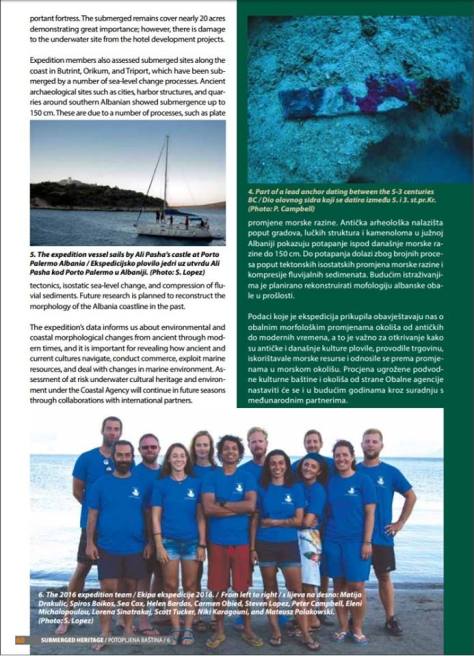
For an insight into our sailing journey and expedition, check out my blog post.
A place where the mountains kiss the seas. Soaring backdrops contour the distinct steep rocky shores of the Balkans. I have been lucky to explore the coastlines of Croatia, Montenegro, and more recently, their less visited neighbour, Albania. It is still relatively unknown and untouched… a beautiful country, rich in history. I was part of a team of international scientists on the “Albania 2016 Marine Science Expedition”, in search of ancient shipwrecks and artefacts along different sites in Albania, known in ancient times as Epirus.
Just as ancient sailors did over 2000 years ago, we embarked on our expedition from the Greek island of Corfu, sailing across to Sarandë, on the Albanian Riviera, then northward through and beyond the Corfu Strait to Vlorë Bay. We sought temporary shelter along the way at Porto Palermo, where the Ali Pasha Castle lies. Before reaching it, we had to watch out for the inconspicuous reef that was hazardous to sailors throughout antiquity, known as the Devil’s Tongue. Below the surface rests the Joni Wreck, a large 4th century AD Roman shipwreck. As we navigated along this mountainous coast, we faced changing winds and choppy waters, so we continually adapted to nature’s whim. Along the largely harbourless Karaburun Peninsula, we caught sight of the distinct limestone-ringed rocky coastline known as the White Roads in antiquity. We anchored en-route, strapped on our dive gear and explored the seabed of Gramma Bay, a small natural haven where Roman forces landed, and Greek and Latin inscriptions of sailors are engraved on the cliff walls of the way, a sort of sailors’ ‘rock diary’.
We then set sail around the tip of the peninsula where it curves into Vlorë Bay, past the natural colour-changing border where the Adriatic and Ionian Seas merge. Along this stretch lies the Cave of the Illyrians, believed to have been a pirate hideout in the past. We explored threatened areas, finding evidence for ancient sea-level change and maritime trade. Our most exciting discoveries were large submerged remains at the fortified Roman port of Triport, proving to be far larger than previously believed, extending an additional 8 acres at least. It offered anchorage for ships on the sea and Narta Lagoon, linking ancient cities via major Roman roads and trade routes. On the return journey, we took the land route instead, driving south along mountainous winding roads through abundant national parks. We reached Lake Butrint, an inland lagoon linked to the Roman fortified colony and port Butrint, a key archaeological UNESCO World Heritage site in southern Albania. We carried out underwater cultural assessments of nearby areas, while enjoying evenings at our remote camp surrounding a fireplace in the company of scorpions and mosquitos, overlooking Corfu under a starry sky to the sound of crashing waves.
[excerpt from my ‘Snippets of a Nomadic Year: From South America to the Balkans‘ article published in F*Shift Magazine‘s Explorer issue, Oct 2016, pp. 40-41]
Note: Albania content edited by Steven Lopez, Travel Editor & Archaeologist for F*Shift Magazine, and Oh Snap Adventures! Blog (with M.Sc., specialising on Roman navigation in Albania).
Project directed by Peter B. Campbell, M.A (University of Southampton), Neritan Ceka (Albanian Institute of Archaeology), and Albanian National Coastal Agency.
“Expedition finds remains of fortified Roman port are much larger than previously thought”. Read more about our recent marine science expedition in Albania, featured on Physics News (Phys.org) and the see following blog post.
Exploring Albania’s maritime heritage. Photography: Steven Lopez (instagram: @eslopez128).
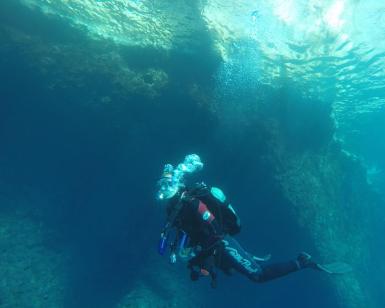
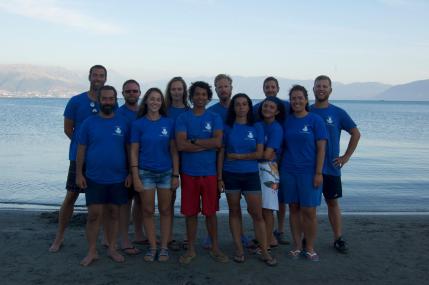
I breathed in the earthy humid air as I took another step deeper into the dense tangled jungle. As I trekked through knee-high swamps any sudden sound would conjure mirages of Cayman crocodiles known to roam these waters. Ancient watchful trees whispered stories across the mist threaded forest. An orchestra of squawking parrots and howling monkeys followed me as I explored this sensory maze. I will never forget the Amazon.
THE AMAZON! Though often associated with unfamiliar perilous and venomous wildlife, the Amazon jungle had always been to me a much fantasised haven which I yearned to explore. Maybe it was growing up as a wild child by a forest pretending to be a jungle native, but that vision followed me, eventually transporting me into the heart of Pachamama (‘Mother Earth’ in Quechua), through which its main artery flows, the Amazon River. The deeper I ventured into the jungle, I noticed the increase in humidity and diversity of indigenous wildlife, ranging from 222 species of mammals, 99 species of reptiles, 140 species of amphibians, 1000 species of birds, 210 species of fish and 2500 species of insects. My guide had grown up in the Amazon, and it was as though he could feel every movement and call that nature shared with us. There is a co-existence between nature and the resilient locals. To decipher the jungle’s language requires local knowledge, patience and a perceptive mind. From being surprised by playful monkeys, to being the one to swing from vines, I felt in tune with nature’s beat. As dusk set in, and we wandered through the night-veiled jungle, my senses felt magnified, alert to any hints of shapes or sounds within the shadows. Furry-legged creatures formed silhouettes under the torch’s limelight to the soundtrack of the dancing foliage. With the rising sun, came rising currents. After an ‘OK’ from the guide, I leapt into the immense fast-flowing river, and momentarily surrendered myself to its will. It was while journeying through the Amazon, with curious eyes, that a fresh peace of mind dawned upon me.
[excerpt from my ‘Snippets of a Nomadic Year: From South America to the Balkans‘ article published in F*Shift Magazine‘s Explorer issue, Oct 2016, pp. 40-41]
For a detailed low-down on how to plan your trip with tips on what to watch out for and things to not miss out, check out: Oh Snap! Adventures blog post!
Photography: Steven Lopez (instagram: @eslopez).